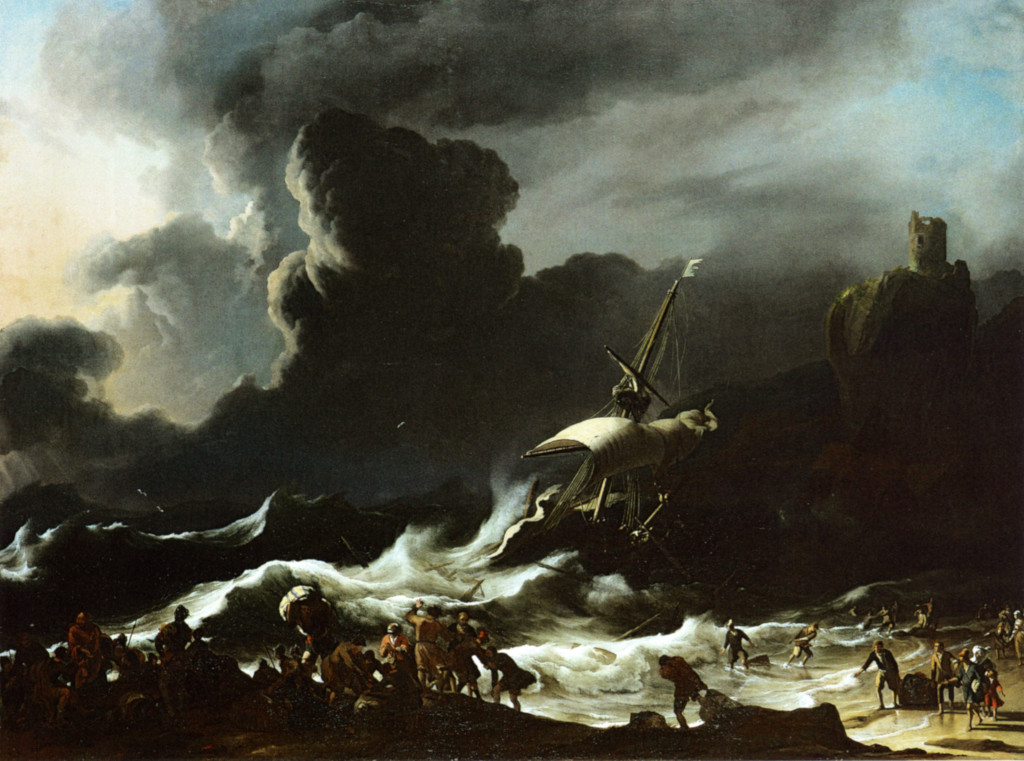After posting Paul is Jesus Redivivus in Acts I remembered I had forgotten to include some of the more interesting details from J. A. Mattill’s article. Mattill began with some historical observations of the Paul-Jesus parallels. I have since added key points to the earlier post.
. . . Important is [Eduard] Zeller’s observation that the remarkable feature in Acts that Paul always is compelled only by the unbelief of the Jews to preach to the Gentiles has its undeniable type in the narrative of Jesus’ rejection in his own home town, the narrative with which Luke so characteristically opens Jesus’ public ministry (Lk. iv 16-30 13).
About the same time as Zeller, Bruno Bauer, whose interest was in the Jesus of the Synoptics rather than of Luke alone, nevertheless set forth thirteen Jesus-parallels in Luke-Acts. The significant part of Bauer’s study, for our purposes, lies in his famous statement:
“Das Original des Petrus und des Paulus der Apostel- geschichte ist der Jesus der synoptischen Evangelien. Der Verfasser der Apostelgeschichte hatte die letzteren … vor Augen, als er ihnen die Züge entlehnte, aus denen er das Bild beider Apostel zusammensetzte ….”
Since the Gospel portrait of Jesus is unhistorical, even one word about the historical character of the copy would be superfluous.
The most thorough-going presentation of the Jesus-Paul parallels is that of Rackham in his commentary on Acts [link is to the online text; see pp xlvii, 401, 477-478]. The active work of Jesus and Paul “is concluded by a ‘passion’ or period of suffering, which in each volume occupies a seemingly disproportionate space …. After early anticipations (Lk. ix 51 = Acts xix 21) and a detailed journey up to Jerusalem (Lk. xvii 11-xix 48 = Acts xx-xxi 17) with ‘last words’ of the sufferer (Lk. xx-xxi = Acts xx 17-38) we have the ‘passion’ proper (Lk. xxii-xxiii = Acts xxi 17-xxviii 10). And then in each case the book ends with a period of victorious but quiet preparation for further advance,.. “For if in the scheme of Acts the last chapters correspond to the last chapters of the Gospel, this chapter (xxvii) forms the parallel (as is fairly evident) to the crucifixion or Lk. xxii-xxiii’’, followed by resurrection. This general parallelism “at once gives significance” to a number of details “which by themselves would have escaped notice”.
Paul’s shipwreck and plunging into the deep are the counterparts to Jesus’ death on the cross (Lk. xxiii 26-49; Acts xxvii 14-24). The storm and darkness during Paul’s voyage correspond to the darkness and spiritual storm on Calvary (Lk. xxiii 44-45; Acts xxvii 20). The verdict of the centurion that Jesus was a righteous man parallels that of the Maltese that Paul was a god (Lk. xxiii 47; Acts xxviii 6). The rest and peace of the three winter months at Malta, when Paul was entirely cut off from the outside world and old life, is like Jesus’ three days in the grave (Lk. xxiii 50-56; Acts xxviii 1-10). Paul’s rescue at sea at Malta is a resurrection from the dead parallel to that of Jesus (Lk. xxiv 1-11; Acts xxvii 39-44). Paul’s voyage to Rome in the spring, which was to Paul the entrance into a new life, is comparable to the joyful period after the resurrection (Lk. xxiv 12-49; Acts xxviii 11-16).
. . .
From the history-of-religions standpoint, Hans Windisch devotes an entire book to the Jesus-Paul parallels in Gospels, Acts, and Epistles. He is concerned with the similarity of the two figures themselves and the comparableness of both to the “man of God” of the Old Testament and the “divine man” of Graeco-Roman antiquity. Paul is Jesus redivivus*, an incarnation of Christ for the church, a Christ under Christ. Luke found this parallelism in the subject-matter itself, and as a theologically-minded historian he developed it so that he made Jesus to be his own apostle as a forerunner of Paul and Paul to be a second Christ-messenger 20).
Much indebted to Rackham is M. D. Goulder, who calls Rackham “a typologist before his time” [see below]. “Acts”, says Goulder, “is not straight-forward history but typological history, the life of Jesus providing the types of the life of the Church”, the body of Christ. “All of the life of Jesus is matter typical of his Church’s history. But the dominant types are the dominant facts of his life, his passion, death, and resurrection ….” Goulder finds wide agreement about the existence of “an intentional set of parallels” between Jesus and Paul.
Goulder strengthens the argument for the parallel between “Paul’s shipwreck and deliverance and Jesus’ death and resurrection”. To the Semites “death was like going into the sea …. All the sea is death to the Semite, whether we drown or whether we paddle and come out again …” Paul himself refers to his shipwrecks as “deaths” and his rescues as “resurrections” (II Cor. i 8-10; xi 23).
Going down in a storm was the metaphor par excellence in scripture for death, and being saved from one for resurrection: when St Paul speaks of his shipwrecks in these terms, how can St Luke have thought otherwise ? He has shaped his book to lead up to the passion of Christ’s apostle from xix 21 on in such a way as to recall what led up to the passion of Christ himself in the earlier book: and as the climax of the Gospel is the death and resurrection of Christ, so the climax of Acts is the thanatos and anastasis of Paul. (Goulder, p. 39)
(Mattill, 18-21)

For those of us interested here is Goulder’s discussion (pp. 34-39) on the shipwreck’s relation to the crucifixion (my formatting): Continue reading “Paul and Jesus: Mirrored Rejections, Deaths and Resurrections”
